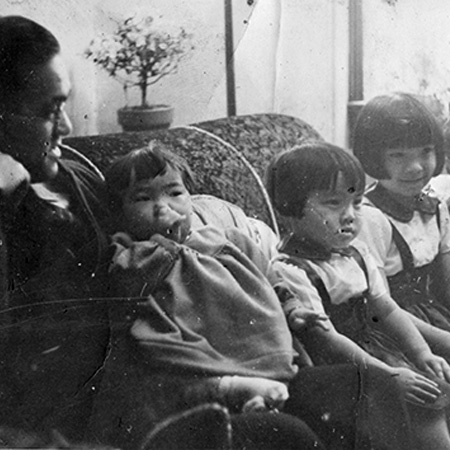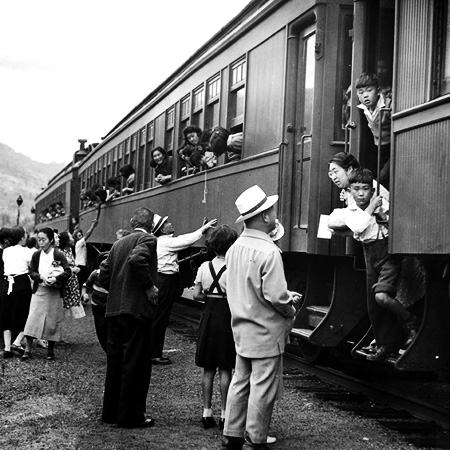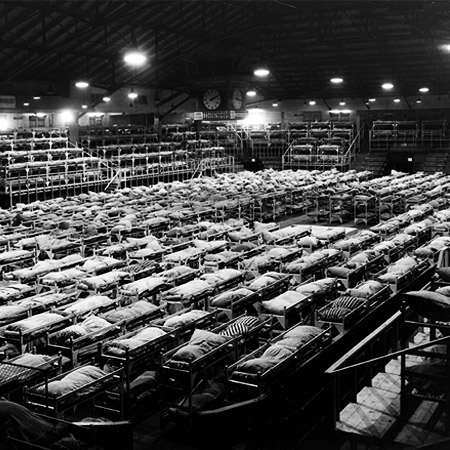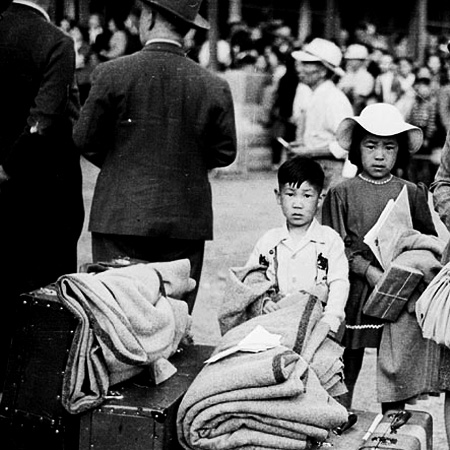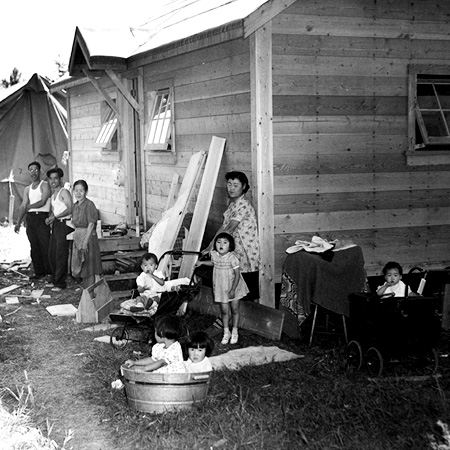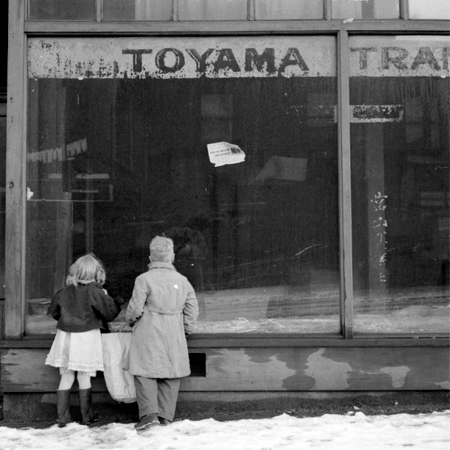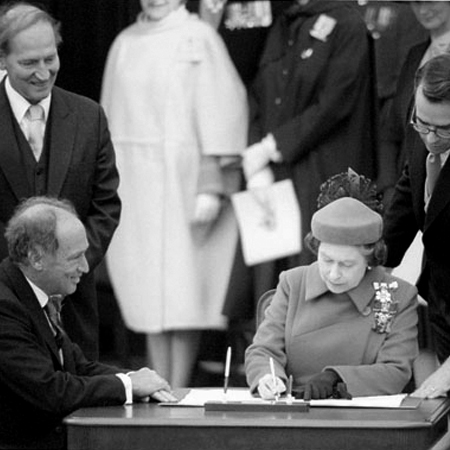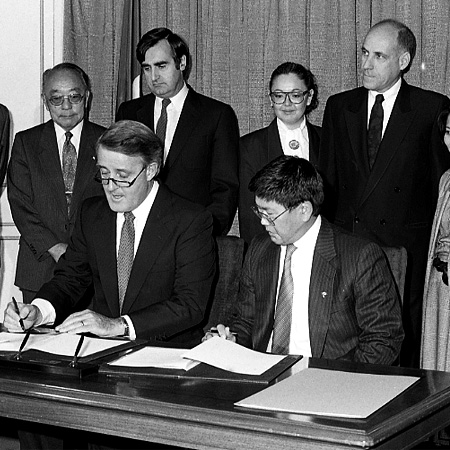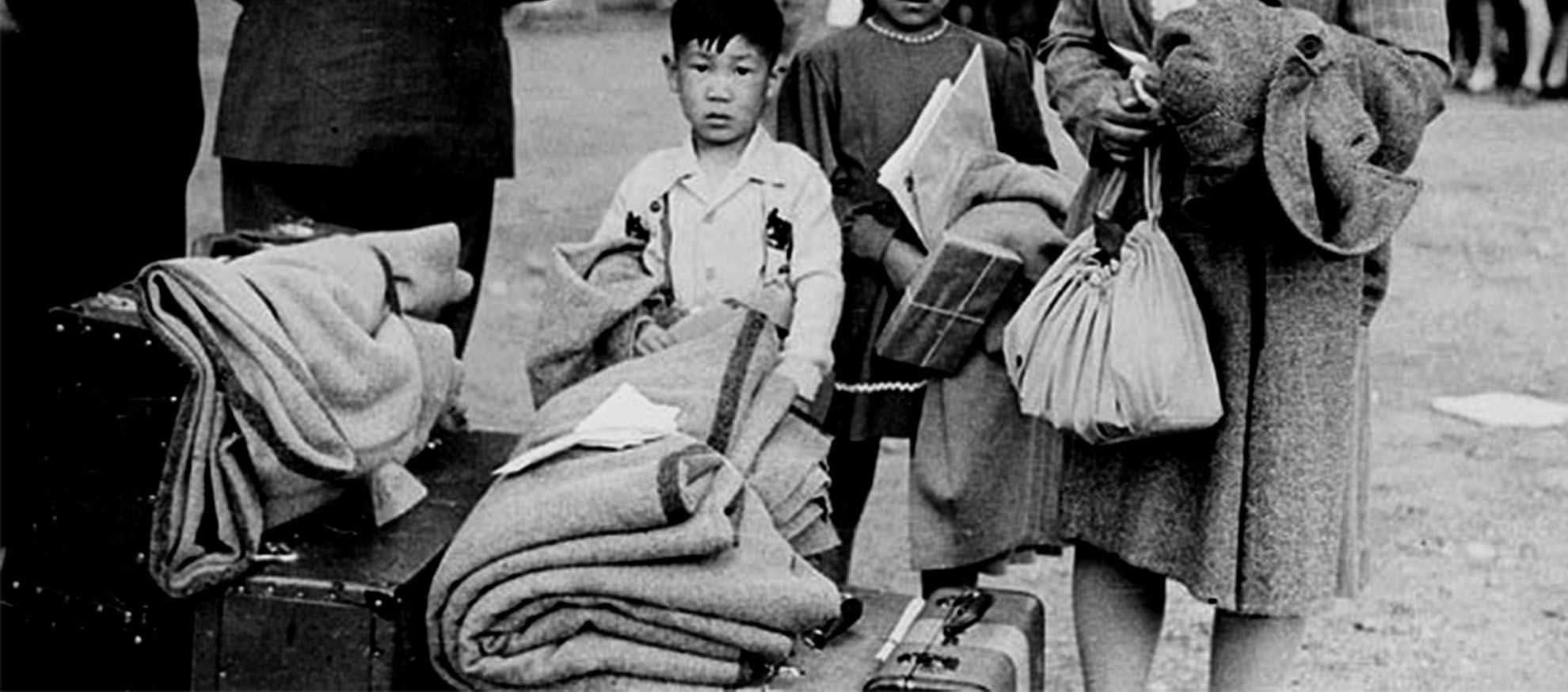
Lesson 5: Living in Internment Camps
Locations of Internment Camps
What
Students will:
- locate and describe major physical features of British Columbia
- demonstrate knowledge of the climatic differences in BC.
- demonstrate understanding of the effects on the lifestyles of Japanese Canadians when they were forcibly removed from their homes on the West Coast and relocated in the interior of British Columbi1.
How
- Show students the map of the internment camps.
Students locate the major physical features in British Columbia: Pacific Ocean, Coast Mountain Range, Rockies, Fraser River, etc. Ask students to locate the areas listed below:
- The 100 mile restricted are1. Shade this area red. Japanese Canadians were not allowed in this are1. Note the restricted area around Trail also.
- List 5 places/cities that the Japanese Canadians were sent to live in when the restricted area was imposed.
- List 5 places/cities that the Japanese Canadians were NOT allowed to live in once the restricted area was imposed.
- Locate each of these communities. Five of these were once thriving silver, lead, zinc mining towns which became under-populated ghost towns* in the mountains, away from the ocean. The other five were hastily built rows of shacks in what was once an orchard or grazing land. 1) Tashme 2) Greenwood* 3) Slocan City* 4) Lemon Creek 5) Popoff 6) Bay Farm 7) Rosebery 8) New Denver* 9) Sandon* 10) Kaslo*
- Self-supporting Projects Locate each of these areas on your map. In these areas, Japanese Canadians were allowed to lease farms and were less restricted than if they were in internment camps. Families were allowed to stay together. 1) Lillooet 2) Bridge River 3) Minto City 4) McGillivray Falls 5) Christina Lake
- The Road Camps Locate the road camps. Many Japanese Canadian men were used as labourers to help build these roads. They were separated from their families who lived in the internment camps. 1) Hope-Princeton 2) Revelstoke-Sicamous 3) Blue River-Yellowhead
- Students discuss how climate varies with location.
- Show students temperature & snowfall chart. Ask students:
- How do you think the elevation of these places and distance from the sea affect the climate?
- Compare the temperatures of the Lower Mainland to one of the camp regions. Though there is not really a great difference in temperatures, these are average temperatures for the month, so that the actual temperatures from day to day of highs and lows may be more extreme.
- Compare the differences in average snowfall. Have students take out their rulers or metre sticks and look at the difference between 3 cm of snow (in Victoria) and 70 cm (in the Kaslo area).
- Compare the mean snow depth. Again, compare Victoria (0 accumulation) with Kaslo (a ruler deep!).
- Discuss why these locations were chosen for the camps and how they affected Japanese Canadians who: a) were accustomed to the mild conditions of the Lower Mainland b) lived in well established communities of Steveston and along Powell Street in Vancouver c) worked in occupations such as fishing, farming and forestry along the coast of British Columbia.
- How would weather conditions affect your daily life if you lived in one of the internment camps? What would it be like to live in a tent or a shack at -3° C with 28 cm of snow on the ground?
- What kind of clothing would you need in winter? (hats, scarves, gloves, thick coats, boots) y Do you think Japanese Canadians were prepared for their new environment? Show the notice which tells the Japanese Canadians how much to bring, but not what to bring. It also doesn't mention where they might end up, just the "interior." Most would not have known what conditions were like outside the Lower Mainland.
Assessment
Draw pictures: on one half show life on the coast in January (wet, rainy) and life in the interior (cold, snowy). The pictures could include people standing in front of their housing (houses on one side, tents or shacks on the other). The people in the pictures on both halves could be dressed the same (because Japanese Canadians would have brought whatever clothes that they had with them. Their clothing might be the same, but their expressions might be different!)
